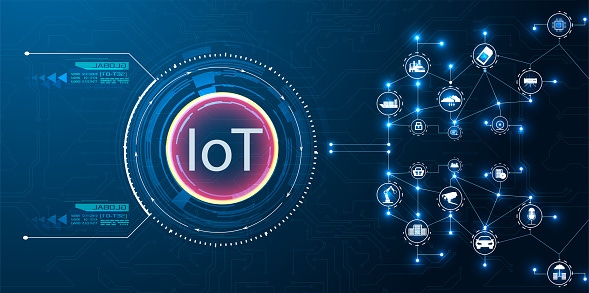Optimizing IoT Power Consumption
IoT power use can drain systems. There are some emerging ways to optimize IoT power consumption, though.
May 8, 2020

By Dan Sullivan
Key takeaways in this article:
IoT technology needs continual power, and while battery power is one option, it isn’t always economical.
The expanding capabilities of IoT devices and increased interest in AI processing at the edge will make power a priority for the foreseeable future.
It is possible to combine several methods of energy reduction and harvesting to optimize power efficiency.
One of the greatest barriers to IoT technology is the implementation of sustainable, functional deployment. The multifunctionality of the Internet of Things (IoT) comes at a cost in terms of power. While traditional battery power is the most obvious solution for remote applications, it’s not always economical.
First, battery capacity may be insufficient for emerging IoT devices with burgeoning and networking processing capabilities. In addition, there is concern about the cost of new batteries and the man-hours required to service the devices.
Second, even rechargeable batteries, which eventually need to be replaced, have a negative impact on the environment. As businesses around the world become more environmentally conscious, this has become a serious consideration. Finally, access to continuous power from the power grid is not always possible. Whether it’s the nature of the deployment, or the cost of connecting devices to a grid, accessing constant power is a recurring challenge for many IoT systems.
There are two primary ways to avoid common IoT power consumption issues. Energy-harvesting techniques, which capture energy from a device’s surrounding environment, have come a long way in the past few years and could be a good option for some deployments. There are a variety of techniques for energy harvesting. It is also possible to combine several methods of energy reduction and harvesting to increase IoT device power efficiency. These techniques include the following:
Piezoelectric materials capture power from mechanical stress, such as swiping a keycard over a key reader.
Thermoelectric materials, which rely on a temperature differential to create electrical potential.
Solar energy, which is an option for IoT devices exposed to sunlight.
Wind energy, which can be used in a range of applications including agricultural monitoring.
IoT device designers already have an array of energy-harvesting options. For example, Cypress’ Solar-Powered IoT device kit provides a small solar panel, along with an energy-efficient motherboard and Bluetooth-USB bridge. Sparkfun’s Energy Harvester board can convert kinetic energy into electrical energy. These and other energy harvesting modules can experiment with more efficient IoT deployment techniques.�
Another promising source of energy for harvesting is vibration. ReVib Energy for example, produces devices that harvest energy from vibrations that naturally occur in manufacturing, mining and transportation environments. Vibration harvesters can be tailored for specific environments. The vibrations caused by passing trains can power sensors on rail switches. Harvesters designed for low frequency vibrations (10 to 30 Hz) are especially useful in mining applications.
In addition to employing energy-harvesting techniques, IoT device designers can employ protocols that conserve power. Three examples of low-power-consumption techniques are: the use of power-saving mode (PSM), employing Extended Discontinuous Reception (eDRX) protocols and wake-up signals. Most cellular technologies turn off their cellular module when they do not need to connect to the cellular network, but reconnecting to the network requires power. PSM, on the other hand, uses network connection timers to reduce IoT power consumption. While using power-saving mode, IoT devices will stay registered with a network for a set amount of time before it is disconnected, even when not in use. This set time can be more than a year in many cases. If the device communicates with the network within this window then no extra power is used to reconnect.
Similar to PSM is eDRX. This method saves power by periodically shutting off the cellular reception module of the device to halt communication. This means data may be delayed in getting to its destination, but this may not be a problem for many IoT applications.
Finally, wake-up signals allow IoT devices to remain asleep and not periodically check for incoming signals. While the device is asleep it must receive a wake-up message before turning back on again. This method is especially useful for devices that don’t need to communicate for long periods of time.
While the electronics field continues to make strides in terms of power consumption, the expanding capabilities of IoT devices and increased interest in AI processing at the edge will make power a priority for the foreseeable future. Ambient energy harvesting can be a powerful tool for devices attached to moving machinery or those with regular sun exposure, and almost all deployments can benefit from low power consumption protocols. Many of these solutions can be applied and utilized after an IoT device is in the field so it is never too late to start saving energy.
You May Also Like
.png?width=700&auto=webp&quality=80&disable=upscale)
.png?width=700&auto=webp&quality=80&disable=upscale)

.png?width=300&auto=webp&quality=80&disable=upscale)
.png?width=300&auto=webp&quality=80&disable=upscale)
.png?width=300&auto=webp&quality=80&disable=upscale)
